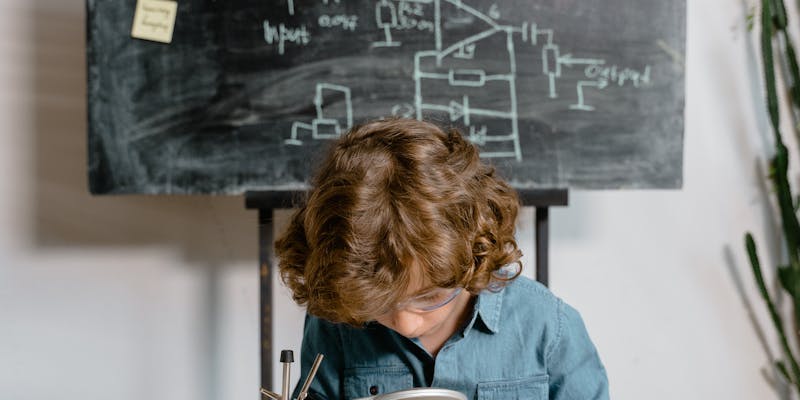Immersive Education: Unlocking Limitless Learning Potential!
Step into a world where learning knows no bounds – welcome to the realm of immersive education! In this blog post, we delve into the transformative power of immersive learning environments and how they revolutionize traditional educational practices. From virtual reality taking students on unforgettable educational journeys to gamification making learning engaging and interactive, we explore how these cutting-edge technologies are reshaping the landscape of education. Get ready to unlock the limitless learning potential as we discuss personalized learning experiences and how immersive technology is breaking boundaries to empower students in ways never seen before. Join us on this enlightening journey as we unravel the unparalleled benefits and opportunities that immersive education has to offer!

Exploring the Impact of Immersive Learning Environments
Exploring the Impact of Immersive Learning Environments
Immersive educational experiences have revolutionized traditional learning methods by providing students with interactive and engaging environments that cater to various learning styles. These immersive learning environments leverage cutting-edge technologies such as virtual reality (VR), augmented reality (AR), and simulations to create realistic and dynamic settings that allow students to actively participate in their learning process.
One of the key benefits of immersive education is its ability to unlock the limitless learning potential of students. By immersing students in virtual scenarios that simulate real-world experiences, immersive educational experiences can enhance student engagement, improve knowledge retention, and foster critical thinking skills. For example, medical students can practice surgical procedures in a virtual operating room, history students can explore ancient civilizations through virtual tours, and language learners can interact with native speakers in simulated conversations.
Furthermore, immersive educational experiences can accommodate diverse learning preferences, making learning more inclusive and accessible to all students. Visual, auditory, kinesthetic, and even social learners can benefit from immersive learning environments that offer a multi-sensory approach to education. By tailoring learning experiences to individual preferences and needs, immersive education empowers students to take ownership of their learning journey and explore subjects in ways that resonate with them personally.
Moreover, immersive educational experiences encourage active participation and collaboration among students, promoting a sense of community and shared learning goals. In virtual classrooms or collaborative simulations, students can work together to solve complex problems, conduct experiments, or explore new concepts in a safe and supportive environment. By fostering a collaborative learning culture, immersive educational experiences not only enhance students' academic performance but also equip them with essential 21st-century skills such as teamwork, communication, and adaptability.
In conclusion, immersive educational experiences have a profound impact on unlocking students' learning potential by providing them with dynamic, interactive, and personalized learning environments. By leveraging the power of immersive technologies, educators can create transformative learning experiences that inspire curiosity, creativity, and lifelong learning in students of all ages
Leveraging Virtual Reality for Enhanced Educational Experiences
Leveraging Virtual Reality for Enhanced Educational Experiences
Immersive educational experiences have completely transformed traditional learning methods by incorporating virtual reality (VR) technology. By immersing students in realistic and interactive environments, VR has proven to be a game-changer in education. Not only does it capture students' attention and engagement, but it also unlocks their limitless learning potential.
One of the key advantages of leveraging VR for educational experiences is the ability to simulate real-world scenarios that are otherwise difficult or impossible to recreate in a traditional classroom setting. For example, students can travel back in time to explore ancient civilizations, dive deep into the ocean to study marine life, or even visit outer space to understand astronomical concepts firsthand. By providing these immersive experiences, VR eliminates the constraints of time, space, and resources, allowing students to learn in ways that were previously unimaginable.
Furthermore, VR enhances students' retention and understanding of complex subjects by appealing to multiple senses simultaneously. Research has shown that engaging multiple senses during the learning process leads to better information retention and a deeper understanding of the material. By combining visual, auditory, and sometimes even tactile stimuli, VR creates a rich learning environment that caters to different learning styles and preferences.
Moreover, VR fosters collaboration and critical thinking skills by encouraging students to work together to solve problems within the virtual environment. Whether it's a group project to build a virtual prototype or a shared exploration of a historical site, VR promotes teamwork and communication among students. These skills are crucial for success in the modern world, where collaboration and innovation are highly valued.
In conclusion, the integration of VR technology in education is revolutionizing the way students learn and interact with information. By unlocking their limitless learning potential through immersive educational experiences, VR is shaping the future of education and preparing students for the challenges of tomorrow. It's clear that the possibilities are endless when it comes to leveraging virtual reality for enhanced educational experiences
Harnessing the Power of Gamification in Education
Harnessing the Power of Gamification in Education
Immersive educational experiences have revolutionized traditional learning methods by offering students a dynamic and engaging way to interact with educational content. One of the key elements that have contributed to the success of immersive education is the integration of gamification.
Gamification involves incorporating game-design elements and principles into learning activities to make them more interactive, engaging, and enjoyable for students. By leveraging the power of gamification in education, educators can create a more stimulating and rewarding learning environment that motivates students to actively participate and learn.
One of the primary ways gamification helps in unlocking learning potential is by fostering a sense of accomplishment and motivation. Through elements such as points, badges, leaderboards, and rewards, students are incentivized to complete tasks, overcome challenges, and achieve learning objectives. This not only boosts their confidence and self-esteem but also encourages them to persist in the face of difficulties, thereby enhancing their problem-solving skills and resilience.
Furthermore, gamification encourages active participation and collaboration among students. By incorporating group challenges, collaborative projects, and competitive games, educators can promote teamwork, communication, and critical thinking skills. Students learn to work together, share ideas, and leverage each other's strengths to achieve common goals, fostering a sense of community and camaraderie within the classroom.
Moreover, gamification makes learning more personalized and adaptive. With features such as branching scenarios, adaptive feedback, and personalized learning paths, students can progress at their own pace, receive tailored feedback, and engage with content that is relevant to their individual needs and interests. This level of personalization not only increases student engagement but also ensures that each student receives the support and guidance they require to succeed.
In conclusion, by harnessing the power of gamification in education, immersive educational experiences can unlock the limitless learning potential of students. Through motivation, collaboration, personalization, and engagement, gamification transforms traditional learning into a dynamic and interactive journey that inspires students to explore, discover, and thrive in their academic pursuits

Personalized Learning Journeys through Immersive Technology
Personalized Learning Journeys through Immersive Technology
In today's rapidly evolving educational landscape, immersive technology has emerged as a powerful tool for unlocking the limitless learning potential of students. By providing personalized learning journeys through immersive educational experiences, educators can cater to the individual needs and preferences of each learner, creating a more engaging and effective learning environment.
Immersive technology, such as virtual reality (VR), augmented reality (AR), and gamification, allows students to step into virtual worlds, interact with digital content, and engage in hands-on learning experiences like never before. These technologies have the ability to transport students to different time periods, simulate scientific experiments, and even practice real-life skills in a safe and controlled environment.
One of the key benefits of immersive educational experiences is the ability to personalize the learning journey for each student. By leveraging technology to adapt content, pacing, and assessment to the unique needs of the learner, educators can ensure that every student is challenged at the right level and supported in overcoming obstacles.
Moreover, immersive technology promotes active learning by encouraging students to explore, experiment, and collaborate in a way that traditional classroom settings may not always allow. This hands-on approach not only increases student engagement but also helps solidify learning by making concepts more tangible and memorable.
By unlocking learning potential with immersive educational experiences, educators can empower students to take ownership of their learning, foster creativity and critical thinking skills, and prepare them for the challenges of the future. As technology continues to advance, the possibilities for personalized learning journeys through immersive technology are endless, making the future of education brighter and more exciting than ever before
Empowering Students with Immersive Education
Empowering Students with Immersive Education
Immersive educational experiences have revolutionized the way students perceive learning, offering a dynamic and interactive approach that goes beyond traditional teaching methods. By seamlessly blending real-world experiences with cutting-edge technology, immersive education empowers students to engage with the curriculum in a whole new light, unlocking limitless learning potential along the way.
One of the key advantages of immersive education is its ability to cater to different learning styles. Whether a student is a visual learner who thrives on interactive simulations or an auditory learner who benefits from immersive storytelling, these experiences can be tailored to individual preferences. By accommodating diverse learning styles, immersive education ensures that no student is left behind, fostering a sense of inclusivity and accessibility in the learning process.
Furthermore, immersive educational experiences have been shown to enhance retention rates and information recall. When students actively participate in virtual field trips, simulations, or gamified learning modules, they are more likely to retain information compared to traditional lecture-based formats. This is because immersive experiences stimulate multiple senses, making the learning process more engaging and memorable.
In addition to improving retention, immersive education also helps students develop critical thinking and problem-solving skills. By placing students in simulated real-world scenarios where they must apply their knowledge to overcome challenges, immersive experiences encourage active learning and creative thinking. This hands-on approach not only deepens understanding but also equips students with the skills needed to navigate complex problems in the future.
Moreover, immersive education can spark a passion for learning by making subjects come alive in a way that textbooks simply cannot. Whether exploring ancient civilizations through virtual reality or conducting virtual science experiments in a simulated laboratory, students are transported to new worlds that ignite their curiosity and enthusiasm for learning. By creating a sense of wonder and excitement, immersive educational experiences inspire students to delve deeper into their studies and pursue knowledge beyond the classroom.
In conclusion, immersive education has the power to transform the educational landscape by unlocking the limitless learning potential of students. By empowering students with engaging, interactive, and personalized experiences, immersive education cultivates a love for learning that extends far beyond graduation. As we embrace the possibilities of immersive technology in education, we open the door to a future where every student has the opportunity to reach their full learning potential